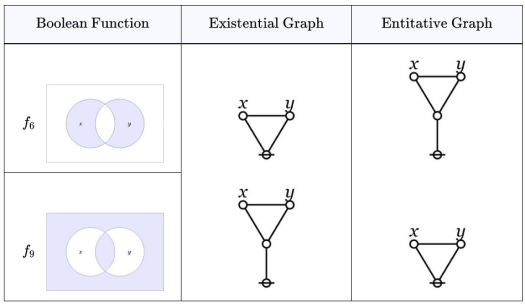Hilbert and Ackermann • Principles of Mathematical Logic (1928)
For the intuitive interpretation on which we have hitherto based the predicate calculus, it was essential that the sentences and predicates should be sharply differentiated from the individuals, which occur as the argument values of the predicates. Now, however, there is nothing to prevent us from considering the predicates and sentences themselves as individuals which may serve as arguments of predicates.
Consider, for example, a logical expression of the form This may be interpreted as a predicate
whose first argument place is occupied by a sentence
and whose second argument place is occupied by a monadic predicate
A false sentence is related to every
by the relation
a true sentence
only to those
for which
holds.
Further examples are given by the properties of reflexivity, symmetry, and transitivity of dyadic predicates. To these correspond three predicates:
and
whose argument
is a dyadic predicate. These three properties are expressed in symbols as follows:
All three properties are possessed by the predicate (
is identical with
). The predicate
on the other hand, possesses only the property of transitivity. Thus the formulas
and
are true sentences, whereas
and
are false.
Such predicates of predicates will be called predicates of second level. (p. 135).
We have, first, predicates of individuals, and these are classified into predicates of different categories, or types, according to the number of their argument places. Such predicates are called predicates of first level.
By a predicate of second level, we understand one whose argument places are occupied by names of individuals or by predicates of first level, where a predicate of first level must occur at least once as an argument. The categories, or types, of predicates second level are differentiated according to the number and kind of their argument places. (p. 152).
Reference
- Hilbert, D. and Ackermann, W., Principles of Mathematical Logic, Robert E. Luce (trans.), Chelsea Publishing Company, New York, NY, 1950. 1st published, Grundzüge der Theoretischen Logik, 1928. 2nd edition, 1938. English translation with revisions, corrections, and added notes by Robert E. Luce, 1950.
Resources
cc: FB | Peirce Matters • Laws of Form • Mathstodon • Ontolog • Academia.edu
cc: Conceptual Graphs • Cybernetics • Structural Modeling • Systems Science




